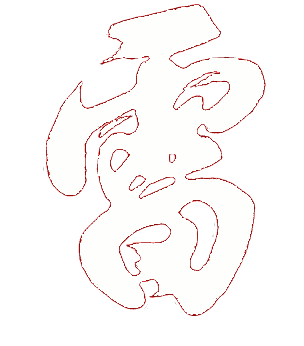Welcome to Kaminari Taiko's Online Press Kit
Kaminari Taiko is a Japanese drumming ensemble based in Houston, Texas. You may have seen us at one of the many festivals and cultural events we participate in across the country.
Kaminari Taiko was founded in 1996, when Jay Mochizuki brought together a diverse group of artists to create a group dedicated to celebrating Japanese culture through musical performance. Since its founding, Kaminari Taiko has grown into the premier taiko ensemble in the Gulf South, performing at concerts and festivals from Texas to Tennessee.
Kaminari Taiko is a cornerstone of Japanese cultural organizations in Houston, headlining the always-popular Houston Japan Fest each April. In 2009 the Consul-General of Japan in Houston presented the Consul-General's Special Award to Kaminari Taiko in recognition of the group's contributions to promoting deeper connection and understanding between Japan and the United States.
In addition to sharing Japanese culture through its performances, Kaminari Taiko also gives back to the community by putting on educational taiko workshops. Kaminari works with local schools, hospitals, and organizations for children with disabilities to bring the joy of music to children around Houston.
Kaminari Taiko travels extensively around the Houston area and across several states to perform at festivals, concerts, schools, private parties, and corporate events. In just the last two years, Kaminari has performed in Louisiana, Mississippi, Tennessee, and across the Eastern half of Texas from Dallas to Hidalgo. With one of the largest arsenals of professional-grade taiko around, Kaminari Taiko never fails to make a lasting impact.
For the latest information about Kaminari's upcoming events, see the Performances page or check us out on Facebook or Instagram.
Frequently Asked Questions
What is taiko?
"Taiko" is a Japanese word that means "great drum" or "wide drum." It can also refer to the modern style of kumi-daiko, in which multiple performers play different types of drums in an ensemble.
Where did taiko originate?
The art of taiko carries deep significance in Japanese culture. Japanese mythology begins with the legend of Amaterasu Omikami, a Sun Goddess who, overwhelmed by her curiosity about an unusual dance to the beat of taiko, emerged from a cave to illuminate the world. Samurai warriors also used taiko on the battlefield to signal commands and frighten their enemies. Taiko were played to accompany noh theater performances and as part of gagako imperial court music. Townspeople warned of danger by beating on taiko, and priests used taiko at religious ceremonies to communicate with the gods. Temples and shrines throughout Japan display taiko as a symbol of purification and to dispel evil spirits.
Around 1950, Daihachi Oguchi, drawing on his background as a jazz musician, put together the first ensemble of taiko of different shapes and sizes to be played by a group of drummers. People loved the high-energy performances, and the style spread. Today there are hundreds of taiko groups around the world.
How did Kaminari Taiko get its start?
Kaminari Taiko was founded in 1996, when Jay Mochizuki brought together a diverse group of artists to create a group dedicated to celebrating Japanese culture through musical performance. We are grateful to have received guidance in our early years from such world-acclaimed taiko masters as Daihachi Oguchi, Seiichi Tanaka (founder of San Francisco Taiko Dojo), Kenny Endo, and Takemasa Ishikura in learning the fundamental skills, philosophy and spirit of taiko.
How often do you perform?
Kaminari Taiko usually puts on between 15 and 20 performances each year, both public and private. Approximately half of our shows are in the Houston area.
Kaminari Taiko makes regular appearances at festivals across the Gulf South. In addition to our role headlining the Houston Japan Fest, we travel every year to New Orleans Japan Fest and the Nashville Cherry Blossom Festival.
Do you write your own songs?
For the most part, yes. We perform a few "covers": Hiryu Sandangaeshi, for example, was written by Daihachi Oguchi, the founder of modern taiko.
Some of our other songs are based on existing compositions, but with a Kaminari twist. What we enjoy most, though, is writing and performing our own songs. The following songs in our current repertoire were written by Kaminari Taiko members: Full Throttle, Kurui Daiko, Raijin, Hanadokei, Shime Trio, Shinkansen, Fudo, Fuujin, Full Moon, and Taiko Tekno.
Who are the members of Kaminari Taiko?
Contact us for the list of performers at a particular show.
Is taiko difficult to learn?
Anyone can learn taiko, but it does take time and dedication. Kaminari Taiko teaches classes at our dojo in Northwest Houston for students at all levels of taiko mastery, from absolute beginners to performing members. Having previous musical experience helps, but it's not necessary. We find that a student's passion for taiko and dedication to practicing are generally the best predictors of his or her success.
Where will Kaminari Taiko perform next?
Check the Performances page for a list of our upcoming performances.
How can I book Kaminari Taiko for my next event?
Contact us for information on booking Kaminari Taiko.
Photos
Here are a few sample images from Kaminari Taiko performances. We have several more images, many in high resolution, available for press purposes. For a high-res version of or photo credits for a specific image, please contact us.
Video
The 90-second video on the left features Kaminari Taiko at several different performances.
The video on the right includes footage of the 13th Annual Grand Taiko Concert at Miller Outdoor Theatre. The show included eight taiko songs performed by Kaminari Taiko, plus bonus performances by Japanese classical dance master Takahamaryu Mitsujuroku and silk aerialists from ImaginAerial.
Media Coverage
Mississippi Museum of Art Blog - January 26, 2011
New Orleans Times-Picayune - October 10, 2010
Nashville Cherry Blossom Festival - March 27, 2010
Cynthia Woods Mitchell Pavilion - November 13, 2009
New Orleans Museum of Art - October 28, 2009
Artshound - September 18, 2009
Consulate-General of Japan in Nashville - October 19, 2008
Japan-America Society of Mississippi - October 16, 2008








